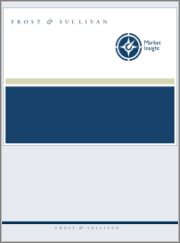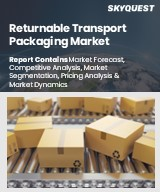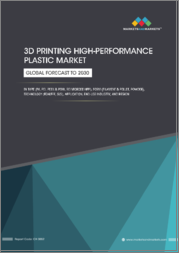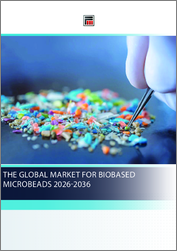
|
시장보고서
상품코드
1351235
순환 경제에서 플라스틱의 성장 기회Growth Opportunities in a Circular Economy for Plastics |
||||||
지속가능한 솔루션에 대한 수요 증가와 재활용률이 높은 새로운 플라스틱 제품에 대한 요구가 성장 파이프라인을 강화
이 연구는 재생 플라스틱 시장과 플라스틱 순환성 향상 방법의 질적 분석이라는 두 가지 주요 분야를 탐구하여 플라스틱 순환 경제에 대한 종합적인 이해를 제공합니다. 이 조사에는 다양한 산업 분야에서 재생 PE, PP, PET, PVC, PA, ABS에 대한 수요에 대한 개요가 포함되어 있습니다. 프로스트 앤 설리번의 재활용 플라스틱에 대한 수요와 순환 경제의 틀에서 전망에 대한 이해를 높이고 있습니다.
본 조사에서는 2019년부터 2029년까지 각 폴리머 종류와 지역별 물량을 조사하고, 2022년을 기준년으로 하여 2023년부터 2029년까지 7년간의 예측 기간 동안 예상 복합 연간 성장률에 근거한 예측을 제시합니다.
재생 플라스틱의 현재 시장 규모는 순환형 사회 목표, 법규 및 소비자 촉진요인, 재료 대체 가능성, 정치, 사회경제, 규제, 환경, 원자재, 기술 동향의 변화 등의 요인에 따라 평가됩니다. 이러한 요인들은 성장 촉진요인과 억제요인으로 분류되어 예측 분석에 고려됩니다.
이 보고서는 지속가능성과 고성능을 우선시하는 제품에 대한 수요 증가가 재생 플라스틱의 성장을 주도하고 있다고 분석했습니다. 또한 이 보고서는 다양한 최종 용도에서 버진 플라스틱을 재생 플라스틱으로 대체할 수 있는 가능성을 상세히 분석합니다. 또한 예측 기간 동안 재생 플라스틱의 주요 성장 기회도 평가하고 있습니다.
정량적 분석과 더불어 재사용 개념, 다양한 종류의 재활용 방법, 플라스틱의 대체 원료에 대한 정성적 평가도 함께 이루어집니다. 몇 가지 사례 연구는 다양한 재사용, 재활용 및 대체 원료의 사례를 보여줍니다. 이 사례들을 통해 플라스틱 순환 경제에 대한 다양한 사고방식과 순환성을 달성하기 위해 제조업체들이 취하는 다양한 접근 방식을 이해할 수 있습니다. 이 분석은 플라스틱 산업에서 순환 경제 실천의 실현 가능성과 잠재적 영향에 대한 인사이트를 제공합니다.
주요 특징
재활용 플라스틱 시장 분석의 목적
- 재생 플라스틱의 현재 시장 규모와 성장 잠재력을 평가합니다.
- 주요 시장 참여자, 이해관계자, 플라스틱 재활용을 촉진하는 역할을 파악합니다.
- 재생 플라스틱 수요의 지역별 차이를 분석합니다.
- 재생 플라스틱 채택에 영향을 미치는 경제적, 규제적, 기술적 요인을 포함한 시장 장벽을 평가합니다.
- 재생 플라스틱 제품에 대한 소비자의 인식과 선호도를 분석합니다.
플라스틱의 순환성 개선에 대한 정성적 분석의 목적
- 기계적 재활용, 화학적 재활용, 대체 원료 등 플라스틱의 순환성 향상을 위한 다양한 방법과 기술을 검토하고 분석합니다.
- 다양한 플라스틱 순환성 향상 방법이 환경, 경제, 사회에 미치는 영향을 평가합니다.
- 플라스틱의 순환성을 높이기 위한 기술 발전, 모범 사례 및 혁신적인 접근 방식을 확인합니다.
- 다양한 산업과 지역에서 성공한 서큘러리티 이니셔티브의 사례 연구와 실제 사례를 분석합니다.
시장 세분화: 고분자 종류별: 재활용 PE, 재활용 PP, 재활용 PET, 재활용 PVC, 재활용 PA, 재활용 ABS
지역별 부문
- 아메리카: 미국, 캐나다, 라틴아메리카(멕시코 포함)
- 유럽: 서유럽(EU27개국, 미국, 노르웨이, 스위스), 동유럽, 독립국가연합(CIS)
- 중동, 아프리카, 남아시아(MEASA): 중동 사우디아라비아, 아랍에미리트(UAE), 쿠웨이트, 바레인, 오만, 카타르 등 중동 국가, 아프리카 국가, 인도, 파키스탄, 스리랑카, 방글라데시 등 남아시아 국가
- 아시아태평양: 중국, 동남아시아, 호주, 뉴질랜드, 일본, 한국, 한국
목차
전략적 과제
- 왜 성장이 어려워지고 있는가?
- The Strategic Imperative 8(TM)
- 플라스틱 서큘러·이코노미의 전략적 과제 상위 3개 임팩트
- 성장 기회가 Growth Pipeline Engine(TM)을 지지한다
성장 기회 분석
- 분석 범위
- 지역적 범위
- 세분화
- 밸류체인 분석
- 밸류체인 분석 인사이트
- 불황이 플라스틱 재활용에 미치는 악영향
성장 기회 분석 : 플라스틱 순환 경제 정량 분석
- 성장 지표
- 성장 촉진요인
- 성장 억제요인
- 예측 가정
- 매출과 수량 예측
- 수량 예측 보수 시나리오 vs프로스트 시나리오
- 매출과 수량 예측 분석
- 평균 가격 예측
- 평균 가격 예측 분석
- 플라스틱별 수량 전망
- 플라스틱별 매출과 수량 예측
- 플라스틱별 매출과 수량 예측 분석
- 재활용 기술별 수량 예측
- 지역별 수량 전망
- 지역별 수량 예측 분석
성장 기회 분석 : 플라스틱 순환 경제
- 플라스틱 순환 경제-촉진요인
- 프리뷰 플라스틱 순환 경제 : 주요 과제
- 사업 운영상 과제
- 규제상 과제
- 경쟁 과제
성장 기회 분석 : 플라스틱 순환 경제의 재이용
- 재이용
- 재생 포장에 의한 재이용
- 일렉트로닉스 재이용과 수리권
- 자동차 부품 재이용과 수리권
- 재이용 모델 시장 도입을 가속하는 전략
성장 기회 분석 : 플라스틱의 순환 경제를 위한 재활용
- 기계적 재활용
- 기계적 재활용 전략
- 기계적 재활용 플라스틱 포장 제품 전환
- 기계적 재활용 건축용 플라스틱 제품 재활용
- 기계적 재활용 전자제품 재활용
- 케미컬 재활용
- 케미컬 재활용 용해와 해중합
- 용해 사용 사례 : INEOS 스치로류션
- 용해 사용 사례 아지렉스
- 용해 사용 사례 : AgilyxAPK AG
- 용해 사용 사례 : APK AG퓨어 주기·테크노로지즈
- 용해 사용 사례 : Brightmark Energy
- 용해 사용 사례 : TotalEnergies Corbion사
- 해중합(화학) 사용 사례 : BASF
- 해중합(화학) 사용 사례 : BASF 미츠비시 화학
- 해중합(화학) 사용 사례 : TechnipFMC
- 탈중합(열분해) 사용 사례 : LyondellBasell사
- 해중합(열분해) 사용 사례 : 태 젠트·테크놀러지 회사
- 재활용 시장 도입을 가속하는 전략
성장 기회 분석 : 플라스틱 순환 경제를 위한 대체 원료
- 대체 원료
- 대체 원료 바이오플라스틱
- 대체 원료 제일 세대 원료-카길
- 대체 원료 제일 세대 원료-Braskem
- 대체 원료 : 제일 세대-로켓
- 대체 원료 제2 세대 원료-그린 닷 바이오플라스틱
- 대체 원료 제2 세대-BioLogiQ
- 대체 원료 제2 세대-FKuR Kunststoff GmbH
- 대체 원료 제3세대 : Newlight Technologies
- 대체 원료 : 제3세대 아르직스
- 대체 원료 제3세대-풀 주기·바이오플라스틱
- 대체 원료 이산화탄소 코베스트로포리우레탄
- 대체 원료 이산화탄소-황동 화학 병기·폴리올레핀
- 대체 원료 채용을 가속하는 전략
성장 기회 유니버스
- 성장 기회 1 : 순환형 제품 개발을 가속하기 위한 밸류체인 전체에서의 협력 강화
- 성장 기회 2 : 기계적 재활용과 화학적 재활용 통합에 의한 재활용률 향상
- 성장 기회 3 : 재활용·밸류체인 수집, 클리닝, 선별, 수송 물류 강화
- 성장 기회 4 : 폐바이오매스와 폐플라스틱 공열분해
- 성장 기회 5 : 공업지대에서 이산화탄소를 유효 이용하고, 현지 제조 시설에서 플라스틱을 생산한다
다음 스텝
- 다음 스텝
- 왜 지금, 프로스트인가?
- 별지 리스트
- 면책사항
Increased Demand for Sustainable Solutions and Need to Make New Plastic Products with More Recycled Content Will Enhance the Growth Pipeline
This study will provide a comprehensive understanding of the circular economy for plastics by exploring two key areas: the market for recycled plastics and a qualitative analysis of methods to enhance plastics circularity. The research includes an overview of the demand for recycled PE, PP, PET, PVC, PA, and ABS in various industries. It expands on Frost & Sullivan's understanding of the demand for recycled plastics and their prospects in a circular economy framework.
The study discusses volume for each polymer type and each region from 2019 to 2029 and provides a seven-year forecast based on expected compound annual growth rates, with the base year of 2022 and a forecast period from 2023 to 2029.
The current size of the recycled plastics market is assessed based on factors such as circularity goals; legislative and consumer drivers; potential for material substitution; and shifting political, socioeconomic, regulatory, environmental, raw material, and technology trends. These factors, classified as growth drivers and restraints, are considered in the forecast analysis.
The study analyzes the increasing demand for products that prioritize sustainability and high performance, driving the growth of recycled plastics. Moreover, the study offers an in-depth analysis of the potential for substituting virgin plastics with recycled counterparts in various end-use applications. It also assesses the top growth opportunities for recycled plastics during the forecast period.
In addition to quantitative analysis, a qualitative assessment has been conducted on the concepts of reuse, different types of recycling methods available, and alternate feedstocks for plastics. Several case studies are mentioned and represent various reuse, recycling, and alternate feedstock cases. These cases provide an understanding of the diversity of thought in the circular economy for plastics and the various approaches manufacturers are taking to achieve circularity. This analysis provides insights into the feasibility and potential impact of implementing circular economy practices in the plastic industry.
Key Features
Objectives of Market Analysis for Recycled Plastics:
- Evaluate the current market size and growth potential for recycled plastics.
- Identify key market players, stakeholders, and their roles in driving plastic recycling initiatives.
- Analyze region-specific variations in the demand for recycled plastics.
- Assess market barriers, including economic, regulatory, and technological factors impacting the adoption of recycled plastics.
- Examine consumer attitudes and preferences toward recycled plastic products.
Objectives of Qualitative Analysis of Plastic Circularity Improvement:
- Review and analyze various methods and technologies aimed at improving the circularity of plastics, including mechanical recycling, chemical recycling, and alternative feedstocks.
- Assess the environmental, economic, and social implications of different plastic circularity improvement methods.
- Identify technological advancements, best practices, and innovative approaches that enhance plastic circularity.
- Analyze case studies and real-world examples of successful circularity initiatives in different industries and regions.
Market Segmentation by Polymer Type: recycled PE, recycled PP, recycled PET, recycled PVC, recycled PA, recycled ABS.
Regional Segmentation:
- Americas: United States, Canada, Latin America (including Mexico)
- Europe: Western Europe (27 EU countries, the United Kingdom, Norway, and Switzerland), Eastern Europe, and the Commonwealth of Independent States (CIS)
- Middle East, Africa, and South Asia (MEASA): Saudi Arabia, the United Arab Emirates (UAE), Kuwait, Bahrain, Oman, and Qatar in the Middle East; African countries; and South Asian countries, such as India, Pakistan, Sri Lanka, and Bangladesh
- Asia-Pacific: China, Southeast Asia, Australia, New Zealand, Japan, and South Korea
Table of Contents
Strategic Imperatives
- Why is it Increasingly Difficult to Grow?
- The Strategic Imperative 8™
- The Impact of the Top 3 Strategic Imperatives on the Circular Economy for Plastics
- Growth Opportunities Fuel the Growth Pipeline Engine™
Growth Opportunity Analysis
- Scope of Analysis
- Geographic Scope
- Segmentation
- Value Chain Analysis
- Value Chain Analysis Discussion
- Negative Impact of Recession on the Adoption of Plastic Recycling
Growth Opportunity Analysis: Quantitative Analysis of the Circular Economy for Plastics
- Growth Metrics
- Growth Drivers
- Growth Restraints
- Forecast Assumptions
- Revenue and Volume Forecast
- Volume Forecast Conservative Scenario vs. Frost Scenario
- Revenue and Volume Forecast Analysis
- Average Price Forecast
- Average Price Forecast Analysis
- Volume Forecast by Plastic
- Revenue Forecast by Plastic
- Revenue and Volume Forecast Analysis by Plastic
- Volume Forecast by Recycling Technique
- Volume Forecast by Region
- Volume Forecast Analysis by Region
Growth Opportunity Analysis: Circular Economy in Plastics
- Circular Economy in Plastics-Driving Factors
- Preview: Circular Economy in Plastics-Key Challenges
- Operational Challenges
- Regulatory Challenges
- Competitive Challenges
Growth Opportunity Analysis: Reuse for the Circular Economy in Plastics
- Reuse
- Reuse by Reconditioning-Packaging
- Reuse and the Right to Repair Electronics
- Reuse and the Right to Repair Automotive Parts
- Strategies to Accelerate Market Adoption of Reuse Models
Growth Opportunity Analysis: Recycling for the Circular Economy in Plastics
- Mechanical Recycling
- Mechanical Recycling Strategies
- Mechanical Recycling: Conversion of Plastic Packaging Products
- Mechanical Recycling: Conversion of Construction Plastic Products
- Mechanical Recycling: Conversion of Electronic Products
- Chemical Recycling
- Chemical Recycling: Dissolution and Depolymerization
- Dissolution Use Case: INEOS Styrolution
- Dissolution Use Case: Agilyx
- Dissolution Use Case: APK AG
- Dissolution Use Case: PureCycle Technologies
- Dissolution Use Case: Brightmark Energy
- Dissolution Use Case: TotalEnergies Corbion
- Depolymerization (Chemical) Use Case: BASF
- Depolymerization (Chemical) Use Case: Mitsubishi Chemical
- Depolymerization (Chemical) Use Case: TechnipFMC
- Depolymerization (Pyrolysis) Use Case: LyondellBasell
- Depolymerization (Pyrolysis) Use Case: Energent Technology
- Strategies to Accelerate Market Adoption of Recycling
Growth Opportunity Analysis: Alternative Feedstock for a Circular Economy in Plastics
- Alternative Feedstock
- Alternate Feedstock: Bioplastics
- Alternate Feedstock: First-generation Feedstock-Cargill
- Alternate Feedstock: First-generation Feedstock-Braskem
- Alternate Feedstock: First Generation-Roquette
- Alternate Feedstock: Second Generation-Green Dot Bioplastics
- Alternate Feedstock: Second Generation-BioLogiQ
- Alternate Feedstock: Second Generation-FKuR Kunststoff GmbH
- Alternate Feedstock: Third Generation-Newlight Technologies
- Alternate Feedstock: Third Generation-Algix
- Alternate Feedstock: Third Generation-Full Cycle Bioplastics
- Alternate Feedstock: Carbon Dioxide-Covestro Polyurethanes
- Alternate Feedstock: Carbon Dioxide-Braskem Polyolefins
- Strategies to Accelerate Adoption of Alternate Feedstock
Growth Opportunity Universe
- Growth Opportunity 1: Greater Collaboration Across the Value Chain to Accelerate Circular Product Development
- Growth Opportunity 2: Integrate Mechanical and Chemical Recycling Approaches to Improve Recycling Rates
- Growth Opportunity 3: Strengthen Collection, Cleaning, Sorting, and Transportation Logistics of Recycling Value Chain
- Growth Opportunity 4: Co-pyrolysis of Waste Biomass and Waste Plastic
- Growth Opportunity 5: Carbon Dioxide Valorization from Industrial Zones to Produce Plastics in Local Manufacturing Facilities
Next Steps
- Your Next Steps
- Why Frost, Why Now?
- List of Exhibits
- Legal Disclaimer



















